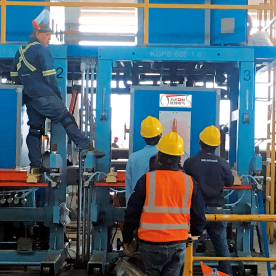[Pipe making machine price comparison]Understanding Pipe Making Machine Price Comparison: Key Factors to Consider for Optimal Investment Decisions
News 2024-9-1
When it comes to manufacturing pipes, investing in a pipe making machine is a critical decision for businesses in the industry. The demand for pipes made from various materials, such as steel, PVC, and polypropylene, is increasing due to construction, plumbing, and infrastructure projects globally. However, with the multitude of options available in the market, conducting a thorough price comparison of pipe making machines is essential to ensure that you make the most informed and cost-effective decision. This article delves into the key factors that affect pricing and provides insights on how to navigate your options effectively.
Understanding Pipe Making Machines
Pipe making machines are specialized industrial equipment designed to produce pipes from different materials through various manufacturing processes. The types of machines include extrusion machines, welding machines, and spiral pipe forming machines. Each machine has its unique features, with specific capabilities and production rates tailored to particular application needs. Understanding the type of pipe making machine required for your production goals is the first step in determining the potential cost.
Factors Influencing Pipe Making Machine Prices
1. **Type of Machine**: The price of pipe making machines varies significantly based on their type. For instance, an extrusion machine, commonly used for producing plastic pipes, might range anywhere from $10,000 to over $100,000, depending on its automation level and production output. On the other hand, more complex machines, like those used for spiral welding pipes, may start from $50,000 and exceed $200,000.
2. **Production Capacity**: The machine’s production capacity—how many pipes it can produce in a given timeframe—also plays a significant role in pricing. High-capacity machines often have a higher price tag due to their additional features and enhanced speed. While it might seem more cost-effective to purchase an entry-level machine for smaller production runs, if your long-term goals include scaling operations, investing in a higher-capacity machine may save money in the long run.
3. **Material Compatibility**: Different machines are built to accommodate specific materials. Machines capable of processing multiple materials or those designed to handle innovative piping systems may come with a higher price. While specialized machines may provide better performance for a single material type, multi-material compatibility can justify a higher investment through expanded capabilities.
4. **Automation and Technology**: Automation is a game-changer in manufacturing processes. Advanced machines equipped with automation features often have an increased initial cost due to their high-tech components, but they can also significantly reduce labor costs and improve production efficiency. When making a price comparison, it is essential to consider how much you are willing to invest in automation versus potential returns in productivity.

Understanding Pipe Making Machine Price Comparison: Key Factors to Consider for Optimal Investment Decisions
6. **Geographical Location**: Pricing can also vary based on geographical location. Shipping costs, tariffs, and local demand all play a role in affecting the final price of pipe making machines. Additionally, regional manufacturers may offer competitive pricing due to lower overhead costs, making it worthwhile to compare both local and international options.

Understanding Pipe Making Machine Price Comparison: Key Factors to Consider for Optimal Investment Decisions
When conducting a price comparison for pipe making machines, take a systematic approach:
1. **Define Your Needs**: Clearly outline the specifications required for your production goals. Consider the materials you will be using, the expected production volume, and any unique requirements your business may have.
2. **Research and List Options**: Gather information from multiple suppliers, both online and offline. Create a list of machines that fit your specifications and compare their features, prices, and warranties.
3. **Request Quotes and Demos**: Contact suppliers for detailed quotes and, if possible, request demonstrations of the machines. This will give you a better understanding of their functionalities and help you assess their value.

Understanding Pipe Making Machine Price Comparison: Key Factors to Consider for Optimal Investment Decisions
5. **Read Reviews and Testimonials**: Customer feedback can provide invaluable insights into the performance and reliability of machines. Look for reviews from businesses similar to yours to gauge the real-world effectiveness of each machine you are considering.
Conclusion
Investing in a pipe making machine is a significant financial commitment that requires careful consideration. A comprehensive price comparison—taking into account the various factors outlined in this article—will help you make a strategic decision that aligns with your production needs and long-term business goals. Remember, the most expensive option is not always the best; it’s crucial to find the right balance between cost, quality, and capability tailored to your specific requirements.
